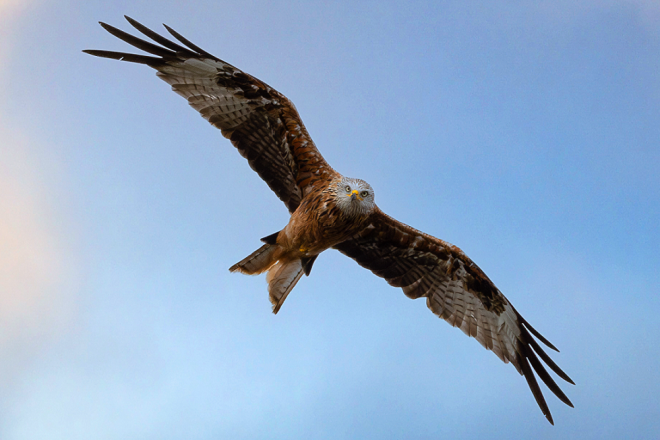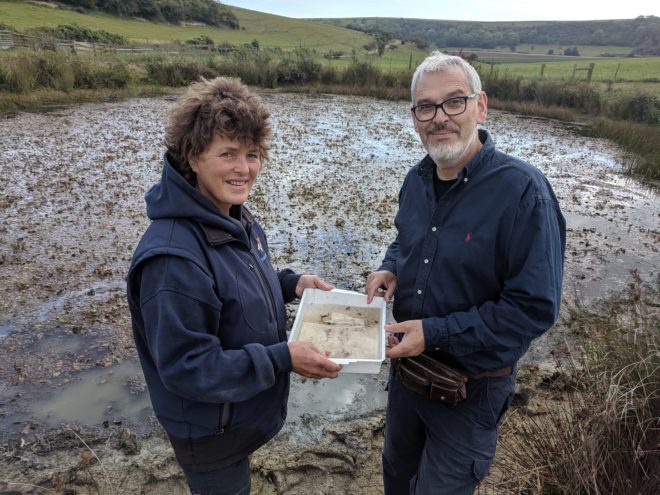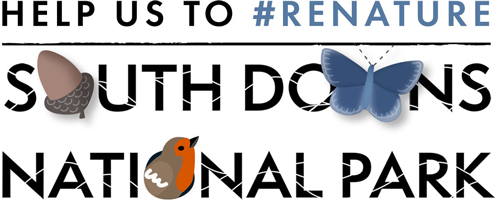Major survey reveals mixed fortunes of precious farmland birds in South Downs
August 14, 2025

A fascinating 10-year study has shone a spotlight on how endangered farmland birds are faring in the south east of England.
With farmland making up around two thirds of the South Downs National Park, it’s the biggest habitat for a range of birds such as the iconic skylark whose song is one of the most evocative sounds in the English countryside.
Following a decade of surveying by an army of volunteers, the research has shown that some key species are bouncing back in the region, while others need more help for bird populations to recover.
The study showed that skylark populations significantly increased over the decade – by some 20 per cent – particularly across downland in Hampshire and East Sussex. Sightings of corn bunting, known for its “jangling keys” song, increased by around 43 per cent, with hotspots north of Chichester, east of Winchester and parts of East Sussex.
Meanwhile, sightings of red kite and buzzard marginally increased, with strongholds in West Sussex from Midhurst down to the Havant area and around Arundel.
Populations of grey partridge appear to be stable, with hotspots in West Sussex.
Some species did not fare so well, however. While hotspots remain, yellowhammer sightings are down by almost a fifth and linnet populations appear to be declining, with just over 10 per cent fewer sightings. Meadow pipit recordings have marginally decreased, while strongholds remain across downland in East Sussex. There is evidence that lapwings are declining in distribution.
The detailed report was compiled by the South Downs Farmland Bird Initiative (SDFBI), a partnership including the South Downs National Park Authority, The Sussex and Hampshire Ornithological Societies, The Game and Wildlife Conservation Trust (GWCT), The Royal Society for the Protection of Birds (RSPB), The British Trust for Ornithology (BTO) and Natural England.
Bruce Fowkes, Farming Officer for the South Downs National Park, said: “The findings show real success stories for the skylark and corn bunting – two birds that people are likely to see and hear in the South Downs National Park. Farmers’ conservation efforts are clearly paying off for these iconic species.
“Recordings of red kite and buzzard are generally good indicators for healthy ecosystems, so this is also encouraging.

“The data suggests that some species are on the decline in the region and the reasons for this are complex and mirror some national trends we’re seeing. It underlines the need for more habitat management to create the right conditions for farmland birds to thrive.
“The study has shown that the National Park remains an important landscape for many of the UK’s red-listed farmland bird species. These species rely on the farmed landscape, which makes up 70 per cent of the National Park, and there’s tremendous potential for it to become an even bigger stronghold.
“We now have a huge baseline of data and mapping tools which farmers can use in their management decisions going forward. The key thing is doing the right thing in the right place to help these birds bounce back.”
Across the UK, farmland bird populations have declined by almost two thirds since 1970. The most severe population declines occurred between the mid-1970s and the early 1990s, largely due to the impact of rapid changes in farmland management.
Since the National Park was created in 2010, six farm clusters have been set up – with hundreds of farmers across Hampshire and Sussex working with the National Park Authority and partners to promote nature-friendly farming. Initiatives include hedgerow planting, tree planting, wildflower margins, installing bird feeders and nesting boxes, creating new ponds, and setting aside more marginal land for ground-nesting and feeding. Funding through agri-environmental schemes is key in supporting this habitat provision.
Bruce added: “We think one of the key things going forward is to provide more food resources for chicks, in particular creating those wildflower areas that are full of insects and seeds to help juvenile birds survive and grow.
“We’re looking forward to another 10 years of this farmland bird initiative, using the skills and knowledge of birdwatchers across the National Park, linking with their local farmers and supported by the partnership, to continue managing and enhancing this wonderful landscape for farmland birds.”

Caroline Harriott, who farms in West Sussex, said: “Being part of the Arun To Adur Farmers group has enabled me to put out bird buckets filled with birdfeed over the farm for several years. Feeding the birds between November and April when they are at their most vulnerable has definitely seen an increase in farmland birds on our farm.
“With the help of local ornithologists, a decent set of binoculars and the Merlin bird identification app I’ve been able to identify and count all the different species and record them for the GWCT Bird Farmland Bird Count every February.
“This year with the support of the South Downs National Park I was able to watch and protect four lapwing chicks that hatched on our farm until they fledged and left for their summer adventures which was one of the most amazing ‘money-can’t-buy’ experiences!”
To find out more about the initiative visit http://southdownsfarming.com/south-downs-farmland-bird-initiative-sdfbi/
- Coordinated by the South Downs Farmland Bird Initiative (SDFBI), the surveying is undertaken by volunteers who are each allocated a randomly selected 1km grid square. The volunteers use public rights of way to undertake two morning surveys, one in April and the other in June. They aim to walk two transects across their grid square noting the type and numbers of birds they see along their route.
- A wide range of birds can be found on farmland across the South Downs. They can be split into two groups – generalists and specialists.
Generalists are those species that use farmland for breeding and/or feeding but are not solely dependent upon it. They include woodpigeon, greenfinch and goldfinch.
Specialists are those birds that are solely reliant upon farmland for their breeding and feeding requirements. They include grey partridge, lapwing, yellowhammer and skylark.
The specialists have fared worse over the last 40 years, and it’s these birds that will benefit most from targeted conservation measures on farms.
- Creating specific habitats on farmland can help a range of wildlife, and is the most common way farmers and land managers deliver conservation on farms. Research suggests that farmland birds require up to 10% of farmland to be managed in this way to support their populations. To thrive, farmland birds require suitable habitats all year round. This is often called the ‘Big Three’ – safe nesting habitat, summer insect feeding areas and winter seed feeding areas.
